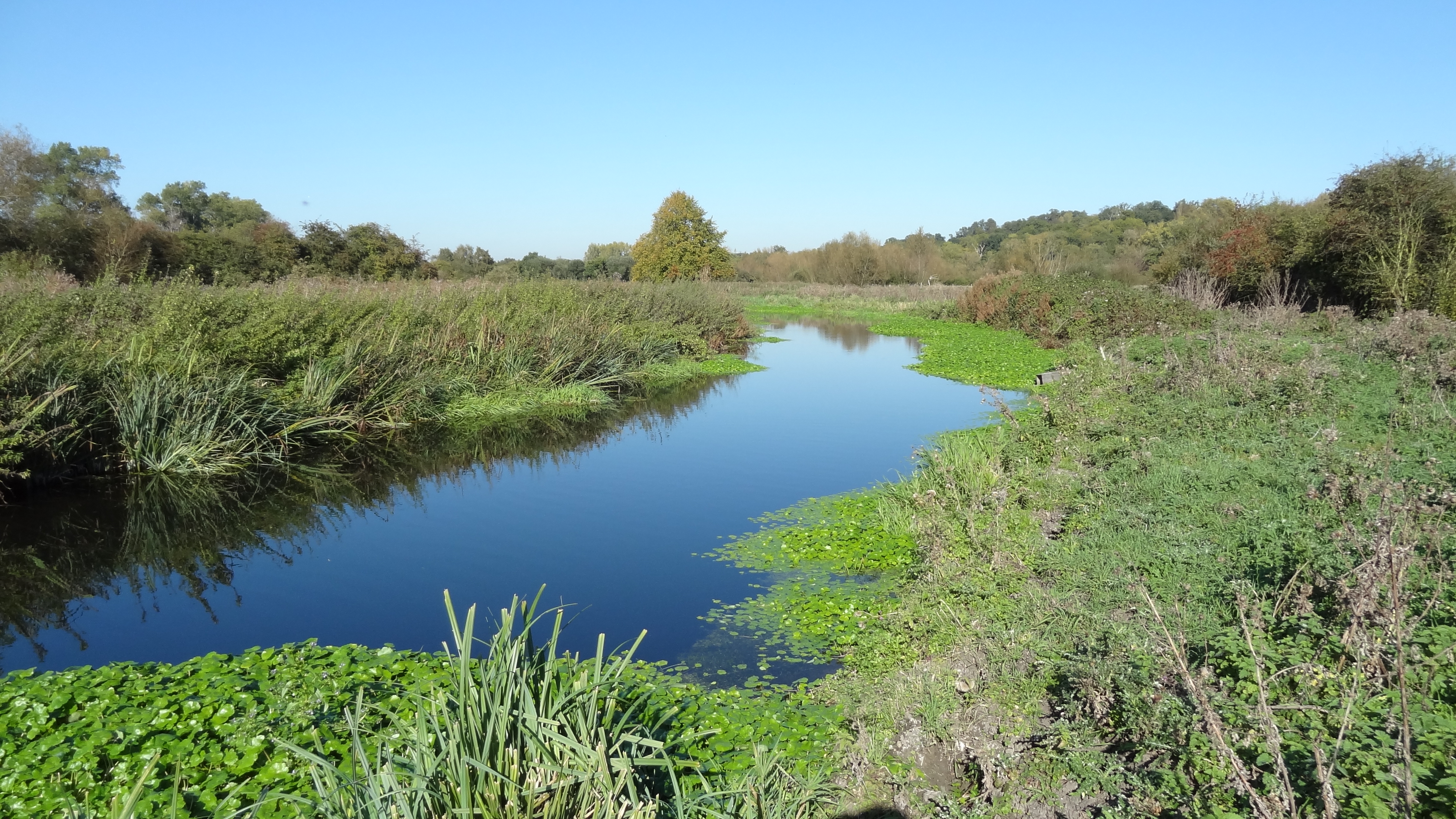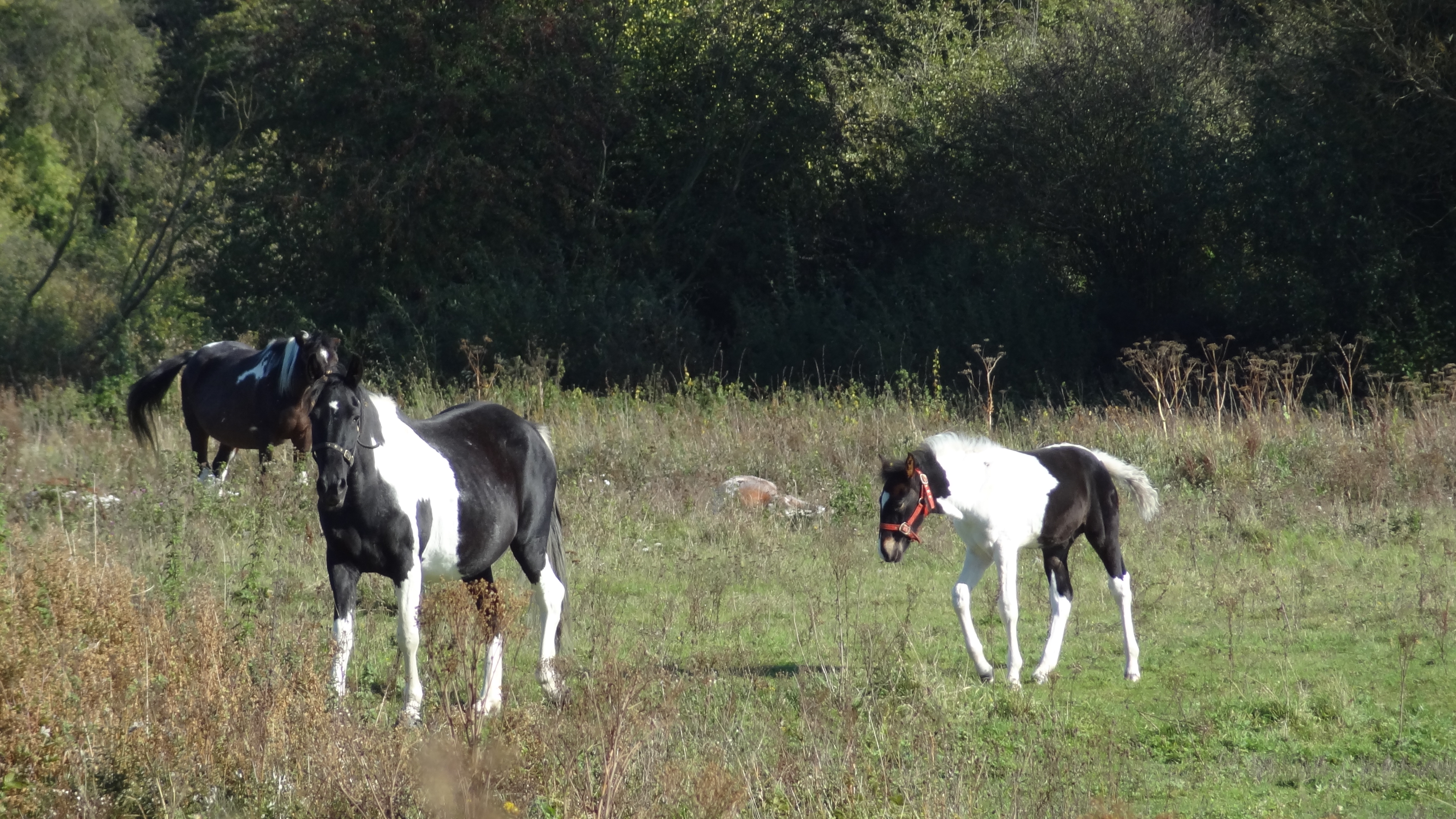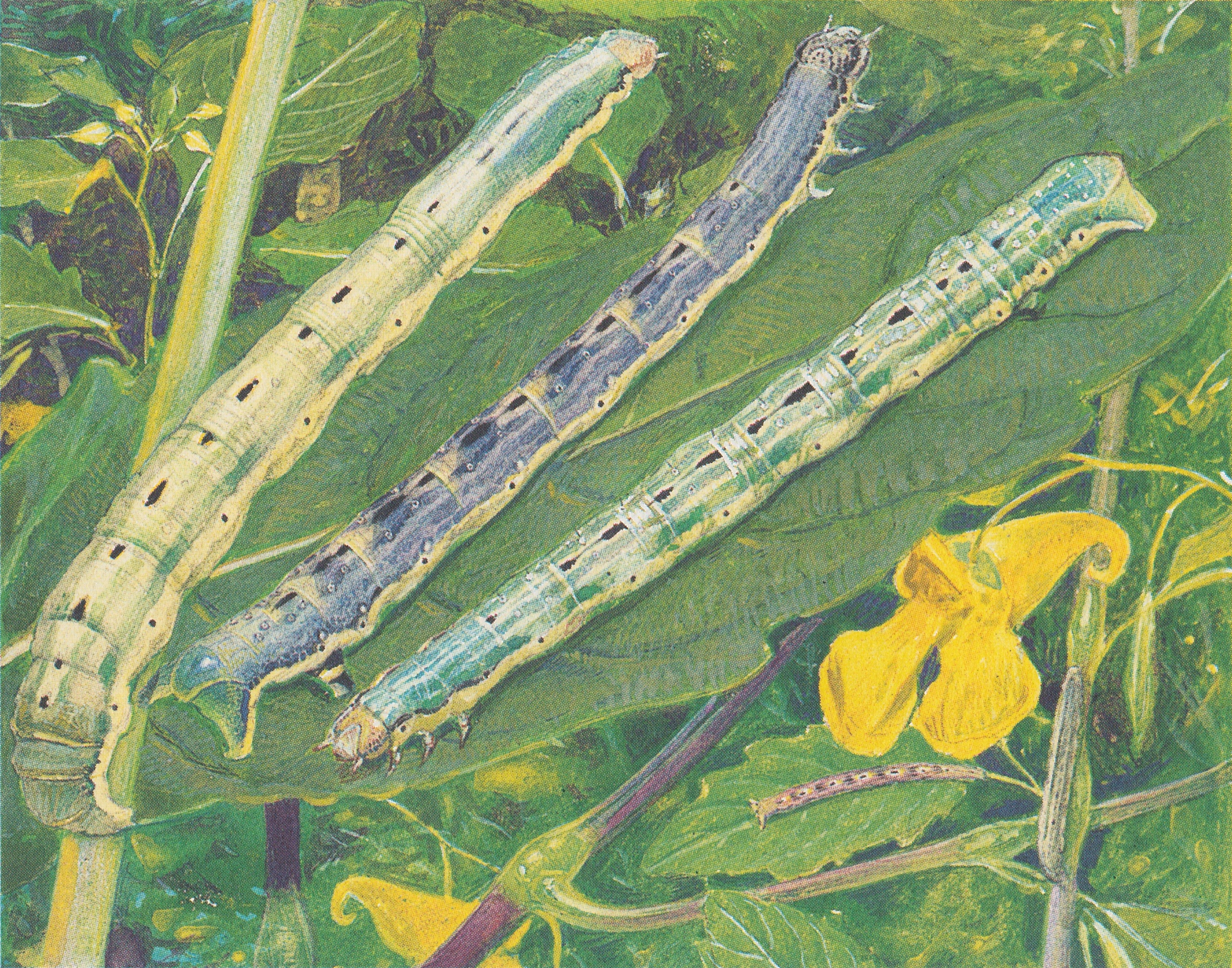|
Denham Lock Wood
Denham Lock Wood is a biological Site of Special Scientific Interest (SSSI) next to the Grand Union Canal, and near Denham in the London Borough of Hillingdon. It was notified in 1986 and is managed by the London Wildlife Trust on behalf of Hillingdon Council. It lies within the Colne Valley Regional Park. It is a poorly drained wet woodland and fen site which is skirted by the Frays River. The main trees are alder and crack willow in the wetter areas, and elsewhere oak and ash with a shrub layer of hazel. In winter wildfowl are visible and in spring many flower species. Invertebrates include red cardinal beetles, banded demoiselles and the rare and protected Desmoulin's whorl snail. The balsam carpet moth was added to the list of British species when it was found at the Wood in 1955, and it is only known at one other site in Britain. Access is by a footbridge across Frays River from Frays Farm Meadows Frays Farm Meadows is a biological Site of Special Scientific I ... [...More Info...] [...Related Items...] OR: [Wikipedia] [Google] [Baidu] |
Greater London
Greater may refer to: *Greatness, the state of being great *Greater than, in inequality (mathematics), inequality *Greater (film), ''Greater'' (film), a 2016 American film *Greater (flamingo), the oldest flamingo on record *Greater (song), "Greater" (song), by MercyMe, 2014 *Greater Bank, an Australian bank *Greater Media, an American media company See also * * {{Disambiguation ... [...More Info...] [...Related Items...] OR: [Wikipedia] [Google] [Baidu] |
Shrub Layer
Stratification in the field of ecology refers to the vertical layering of a habitat; the arrangement of vegetation in layers. It classifies the layers (sing. ''stratum'', pl. ''strata'') of vegetation largely according to the different heights to which their plants grow. The individual layers are inhabited by different animal and plant communities (stratozones). Vertical structure in terrestrial plant habitats The following layers are generally distinguished: forest floor (root and moss layers), herb, shrub, understory and canopy layers. These vegetation layers are primarily determined by the height of their individual plants, the different elements may however have a range of heights. The actual layer is characterised by the height range in which the vast majority of photosynthetic organs (predominantly leaves) are found. Taller species will have part of their shoot system in the underlying layers. In addition to the above-ground stratification there is also a “root layer”. ... [...More Info...] [...Related Items...] OR: [Wikipedia] [Google] [Baidu] |
Nature Reserves In The London Borough Of Hillingdon
Nature, in the broadest sense, is the physical world or universe. "Nature" can refer to the phenomena of the physical world, and also to life in general. The study of nature is a large, if not the only, part of science. Although humans are part of nature, human activity is often understood as a separate category from other natural phenomena. The word ''nature'' is borrowed from the Old French ''nature'' and is derived from the Latin word ''natura'', or "essential qualities, innate disposition", and in ancient times, literally meant "birth". In ancient philosophy, ''natura'' is mostly used as the Latin translation of the Greek word ''physis'' (φύσις), which originally related to the intrinsic characteristics of plants, animals, and other features of the world to develop of their own accord. The concept of nature as a whole, the physical universe, is one of several expansions of the original notion; it began with certain core applications of the word φύσις by pre-Socr ... [...More Info...] [...Related Items...] OR: [Wikipedia] [Google] [Baidu] |
Sites Of Special Scientific Interest In London
Site most often refers to: * Archaeological site * Campsite, a place used for overnight stay in an outdoor area * Construction site * Location, a point or an area on the Earth's surface or elsewhere * Website, a set of related web pages, typically with a common domain name It may also refer to: * Site, a National Register of Historic Places property type * SITE (originally known as ''Sculpture in the Environment''), an American architecture and design firm * Site (mathematics), a category C together with a Grothendieck topology on C * ''The Site'', a 1990s TV series that aired on MSNBC * SITE Intelligence Group, a for-profit organization tracking jihadist and white supremacist organizations * SITE Institute, a terrorism-tracking organization, precursor to the SITE Intelligence Group * Sindh Industrial and Trading Estate, a company in Sindh, Pakistan * SITE Centers, American commercial real estate company * SITE Town, a densely populated town in Karachi, Pakistan * S.I.T.E Indust ... [...More Info...] [...Related Items...] OR: [Wikipedia] [Google] [Baidu] |
List Of Sites Of Special Scientific Interest In Greater London
In England, Sites of Special Scientific Interest (SSSIs) are designated by Natural England, which is responsible for protecting England's natural environment. Designation as an SSSI gives legal protection to the most important wildlife and geological sites. As of August 2019, there are 37 sites designated in Greater London, 30 of which have been designated for their biological interest and 7 for their geological interest. Two sites are Special Protection Areas, three are Special Areas of Conservation, one is a Ramsar wetland site, two are national nature reserves, nine are local nature reserves, seven are Geological Conservation Review sites, one is a ''Nature Conservation Review'' site, one is on the Register of Historic Parks and Gardens and one includes a scheduled monument. Three sites are managed by the London Wildlife Trust, two by the Essex Wildlife Trust, two by the Kent Wildlife Trust, one by the Herts and Middlesex Wildlife Trust, one by the Royal Society for the Prote ... [...More Info...] [...Related Items...] OR: [Wikipedia] [Google] [Baidu] |
Frays Farm Meadows
Frays Farm Meadows is a biological Site of Special Scientific Interest near Denham in the London Borough of Hillingdon. It was notified as an SSSI in 1981, and has been managed by the London Wildlife Trust on behalf of Hillingdon Council since 1999.Natural England, Cows MOOve in to rescue West London Meadow, Press release 22 May 2010 It is part of the Colne Valley Regional Park. Frays Farm Meadows are a set of fields bounded on the south by the and on the west by the |
Xanthorhoe Biriviata
''Xanthorhoe biriviata'', the balsam carpet, is a moth of the genus ''Xanthorhoe'' in the family Geometridae. The species was first described by Moritz Balthasar Borkhausen Moritz Balthasar Borkhausen (3 December 1760, Giessen – 30 November 1806, Darmstadt) was a German naturalist and forester. He took part in the production of ' by Johann Conrad Susemihl. He received his education in Giessen, and in 1796 starte ... in 1794. It is found "widespread in Europe and temperate Asia. In southern Europe the distribution is restricted only locally to the mountain(s)." References External links *''Fauna Europaea'' Xanthorhoe Moths of Asia ... [...More Info...] [...Related Items...] OR: [Wikipedia] [Google] [Baidu] |
Desmoulin's Whorl Snail
Desmoulin's whorl snail (''Vertigo moulinsiana'') is a species of minute air-breathing land snail, a terrestrial pulmonate gastropod mollusc or micromollusc in the family Vertiginidae, the whorl snails. This species was named in honor of the early-19th-century French naturalist Charles des Moulins. Habitat Desmoulin's whorl snail inhabits calcareous wetlands, where there are tall sedges, saw-sedge (''Cladium mariscus''), reed-grass (''Glyceria maxima'') or the reed ''Phragmites australis''. Distribution The distribution of this species is Atlantic (the part of the Palearctic area which is under the direct climatic influence of the Atlantic Ocean), and southern-European. This small snail occurs across Europe as far north as southern Sweden. Within Western Europe, only the populations in England (Great Britain) and Ireland are considered to be viable, although further populations exist in the Czech Republic (critically endangered, occupying the White Carpathians Biosphere Res ... [...More Info...] [...Related Items...] OR: [Wikipedia] [Google] [Baidu] |
Banded Demoiselle
The banded demoiselle (''Calopteryx splendens'') is a species of damselfly belonging to the family Calopterygidae. It is often found along slow-flowing streams and rivers. It is a Eurasian species occurring from the Atlantic coast eastwards to Lake Baikal and northwestern China. This is a common species throughout much of its range. Description This is a large damselfly with a total length of up to and a hindwing length of up to . Male and female are variable in color and pattern. The male has translucent wings which each have a broad, dark iridescent blue-black spot (or band) across the outer part. On immature individuals the spot is dark brown. The body can be a metallic blue or bluish green or a combination of both colours, depending on the time of year and location. The dark wing patch of the male starts at the nodus (the slight dip midway down the upper edge of the wing) but can reach up to the wing-tip in southern races. In the very similar beautiful demoiselle ('' ... [...More Info...] [...Related Items...] OR: [Wikipedia] [Google] [Baidu] |
Cardinal Beetle
The name cardinal beetle typically refers to three different species of beetles. The red-headed or 'common' cardinal beetle ('' Pyrochroa serraticornis'') is a red to orange beetle with, as the name suggests, a red head. It is about long, and is found throughout Britain. The rarer black-headed cardinal beetle (''P. coccinea''), similarly found at sites across Britain, is larger and a deeper blood red. The scarce cardinal beetle ('' Schizotus pectinicornis'') also has a black head, but is smaller at around long. The scarce cardinal is only found at a few sites in Scotland and Wales. Cardinal beetles prey on other insects, while their bright red colour prevents them being the target of other predators which believe them to be toxic. Habitat Red-headed cardinal beetles are normally found at the edges of woodland. Adults of this variety usually emerge around May in England, when they tend to be found under loose bark on deciduous trees. Fallen and standing timber and rotting stump ... [...More Info...] [...Related Items...] OR: [Wikipedia] [Google] [Baidu] |
Salix Euxina
''Salix euxina'', the eastern crack-willow, is a species of flowering plant in the willow family Salicaceae, native from Turkey to the Caucasus. It was first described by I. V. Belyaeva in 2009. It is one of the parents of the common crack-willow, ''Salix'' × ''fragilis''. Description ''Salix euxina'' is a tree which can reach 15–20 m high with a trunk diameter of up to 1 m. It has a wide crown, and old trees develop deeply fissured bark on their trunks. The olive green branchlets are hairless (glabrous) and very brittle at the base, so that branches easily break off. These are able to root and propagate the species. The leaves are pale green and glabrous. They have stomata only on the undersurface. The catkins are relatively thick with somewhat densely clustered flowers. ''Salix'' × ''fragilis'', the hybrid between ''Salix euxina'' and ''Salix alba'', has hairs on its branches and branchlets, stomata on both surfaces of its leaves, and slender, more ... [...More Info...] [...Related Items...] OR: [Wikipedia] [Google] [Baidu] |
Carp Lake From Denham Lock Wood
Carp are various species of oily freshwater fish from the family Cyprinidae, a very large group of fish native to Europe and Asia. While carp is consumed in many parts of the world, they are generally considered an invasive species in parts of Africa, Australia and most of the United States. Biology The cypriniformes (family Cyprinidae) are traditionally grouped with the Characiformes, Siluriformes, and Gymnotiformes to create the superorder Ostariophysi, since these groups share some common features. These features include being found predominantly in fresh water and possessing Weberian ossicles, an anatomical structure derived from the first five anterior-most vertebrae, and their corresponding ribs and neural crests. The third anterior-most pair of ribs is in contact with the extension of the labyrinth and the posterior with the swim bladder. The function is poorly understood, but this structure is presumed to take part in the transmission of vibrations from the swim bl ... [...More Info...] [...Related Items...] OR: [Wikipedia] [Google] [Baidu] |


.jpg)



.png)

